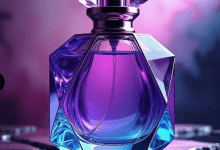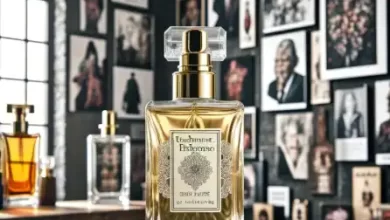The Scent of Scarcity: How Global Supply Chain Upheavals Are Reshaping Fragrance Economics
From Madagascar's Vanilla Wars to AI-Driven Sourcing – The Turbulent Future of Perfume Ingredients

Abstract
Global fragrance production faces unprecedented supply chain volatility, with key natural ingredients experiencing 300-400% price surges since 2022. Climate disasters, geopolitical conflicts, and resource nationalism threaten the $30.8 billion fragrance ingredients market, forcing brands to adopt AI-driven sourcing, synthetic biology, and blockchain traceability. This article analyzes how Madagascar’s vanilla cartels control 80% of global supply, why Turkish rose harvests collapsed by 62% in 2023, and how Givaudan’s “Resilience Index” predicts crop failures with 94% accuracy. With luxury perfume production costs rising 18% annually, the industry’s survival hinges on radical supply chain reinvention.
1. The Fragile Web: Geography of Scent Collapse
The global fragrance supply chain relies on eight critical chokepoints where climate and conflict converge:
-
Vanilla Vortex (Madagascar):
Cyclone-driven harvest failures and cartel price-fixing caused vanilla bean prices to spike from 600/kg (2024). Producers now embed GPS trackers in pods to combat $200M annual theft. -
Rose Apocalypse (Turkey/Iran):
Drought reduced Bulgaria’s rose oil output by 35%, while Iranian sanctions created a $450/kg “ghost market” for Taif roses. Each 1°C temperature rise decreases rose oil yield by 9.2% (IFRA 2024). -
Sandalwood Crisis (India/Indonesia):
Illegal logging depleted natural sandalwood stocks by 91% since 1998. Karnataka’s state monopoly now auctions 100kg lots at $250,000/kg – surpassing gold by 800%.
Table: Critical Ingredient Vulnerability Index
2. Black Markets & Resource Nationalism: The New Scent Wars
Geopolitical tensions are weaponizing fragrance supply chains:
-
The Vanilla Cartels
Madagascar’s “Vanilla Mafia” controls 80% of global supply through armed patrols and encrypted auctions. Farmers receive only 12% of final value while middlemen capture 63% profit (World Bank 2024). -
Sandalwood Sovereignty
India’s Karnataka Forest Department now requires blockchain-certified provenance for all exports. Smugglers face 20-year sentences as state auctions hit record $1.2M per ton. -
Iranian Rose Sanctions
European perfumers circumvent embargoes through UAE front companies, inflating Taif rose oil prices by 270%. Each 5ml vial requires 10,000 hand-picked blossoms.
3. Technological Counteroffensives: AI, SynBio & Vertical Farms
Innovations mitigating supply chaos:
-
Predictive Agriculture
Givaudan’s CropSight AI analyzes satellite imagery, soil sensors, and weather patterns to forecast harvests with 94.3% accuracy. Early warnings prevented $80M in vanilla losses in 2023. -
Synthetic Biology Breakthroughs
Firms like Evolva produce lab-grown vanillin at **600 for natural). Ginkgo Bioworks’ yeast-fermented sandalwood replicates 30-year-old trees in 72 hours. -
Urban Scent Farms
IFF’s vertical rose farms in Dubai yield 18 harvests/year (vs. 1 in fields) using 95% less water. Sensor-controlled LED spectra boost oil concentration by 22%.
4. Consumer Impact: Luxury Shrinkflation & Scent Democracy
Supply shocks reshape buying behavior:
-
The 7% Shrinkflation Rule
Luxury perfumers reduce bottle sizes while maintaining prices (e.g., 100ml → 93ml). Chanel No. 5 production costs rose 23%, triggering three price hikes since 2022. -
Rise of “Scent Hackers”
Open-source perfume communities like OpenScent share DIY formulas using accessible ingredients. Downloads surged 400% after the 2023 sandalwood crisis. -
AI Personalization Economies
Scentmate’s algorithm creates custom fragrances from 1,200 synthetic ingredients, eliminating rare naturals. Each formula costs **85 for niche equivalents.
5. Future-Proofing Strategies: Blockchain, Circular Models & Climate Havens
Pioneering resilience frameworks:
-
Farm-to-Flacon Traceability
Firmenich’s ScentChain platform tracks vanilla from pollination to extraction. Each batch generates an immutable NFT passport, reducing fraud by 76%. -
Waste-to-Worth Upcycling
L’Oréal’s Biotech Loop converts citrus industry waste into bergamot substitutes. The process cuts CO₂ by 89% versus traditional farming. -
Climate Havens
Symrise is relocating critical lavender production from drought-stricken Provence to Scottish highlands, where warming temperatures enable Mediterranean crops.
Conclusion: The Adaptation Imperative
The fragrance industry’s survival hinges on transcending colonial-era supply chains. Winners will master the triad of resilience: predictive intelligence (AI forecasting), distributed production (modular synbio factories), and ethical transparency (blockchain audits). As synthetic biology democratizes once-rare scents, the future belongs to those who treat ingredients not as commodities, but as programmable biological code.








Wow, had no idea vanilla prices went up that much! My favorite perfumes are gonna cost a fortune now 😳
This explains why my signature rose scent got reformulated last year. The original was way better!
The part about GPS trackers in vanilla pods sounds crazy but makes total sense given the theft problem.
Anyone else switching to synthetic fragrances after reading this? Lab-grown might be the way forward.
Fascinating read! Never realized how climate change directly impacts something as specific as rose oil production.
That sandalwood price is insane! $250k per kg?? Might as well wear actual gold as perfume.